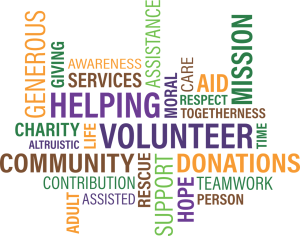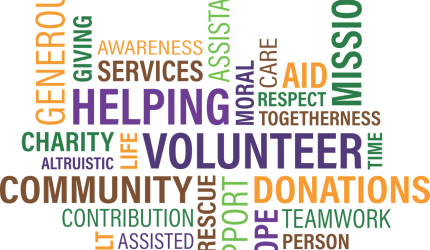 In three coming blog posts and an upcoming podcast with my blogging peers, I would like to raise the issue of mental health, self-awareness and self-criticism on an individual and collective level among aid workers. The academic world agrees (see for. e.g. Ager 2012 [1], Hor, 2017 [2], McPherson et al, 2020 [3]) that there is a serious lack of research concerning the aid workers themselves, the ones performing the aid in the aid sector and the relevance they have in the aid industry.
In three coming blog posts and an upcoming podcast with my blogging peers, I would like to raise the issue of mental health, self-awareness and self-criticism on an individual and collective level among aid workers. The academic world agrees (see for. e.g. Ager 2012 [1], Hor, 2017 [2], McPherson et al, 2020 [3]) that there is a serious lack of research concerning the aid workers themselves, the ones performing the aid in the aid sector and the relevance they have in the aid industry.
This first post brings attention to the mental health of aid workers. Working as an aid worker could entail many stressful and anxiety causing activities, not only affecting the aid workers mental health, but also the work they perform in the sector. The second post turns to humanitarian workers’ use of memes on Instagram as a way to connect, relate and share the frustration over the aid industry with each other. Humour, inside jokes and satirical self-reflection can work as an important coping mechanism and a way of distancing oneself from the difficult reality, but could also reinforce stereotypical patterns among other problematic issues. The third blog post will be of academic nature and deepen the discussion surrounding the role of aid workers, their emotional lives and the effect their coping mechanisms such as the mentioned meme use, or potential martyrdom has on the aid work and the aid workers themselves.
The Mental Health of Aid Workers
A few weeks back, on the 21st of September, I attended a digital conference hosted by SwissPeace named “Centering Care in Women, Peace & Security (WPS)” (I recommend you to check out this link and read their pamphlet). The conference aimed at highlighting the relevance of the care-sector in conflict-settings and why the concept of care should be a centralized and systematic term used in all work with WPS. Leymah Gbowee, Nobel Peace Prize winner of 2011 for her “non-violent struggle for the safety of the women for women’s rights to full participation in peace-building work” [4], held an initial speech that I could both relate to and inspired me to write the following blog series.
She shared a story I would like to share with you, doing my best trying to retell it. She said that aid workers and activists are like the sponges next to the sink. We are here trying to swab the dirt and make the sink a cleaner place, referring to making the world a better place. We swab and swab, and we become more and more full of dirt, and eventually we are so full of it that we can no longer clean efficiently, because all we do is swabbing the dirt around. We do not feel good about ourselves carrying all the dirt inside of us, and we can no longer perform our job well making the sink dirtier, and the world messier.
She stressed the mental health of activists and aid workers, telling us there will always be challenges to our feminist agenda in our lifetime. The difficult nature of aid work makes it impossible to separate the personal feelings and motives from the political work we perform. The suggested reading “Searching for Redemption: Distancing Narratives in the Everyday Emotional Lives of Aid Workers” by Amos Hor (2017) reflects on the emotional anxiety many aid workers experience in the development sector. McPherson et al (2020) shed light on aid workers to be an overlooked population struggling with posttraumatic stress disorder (PTSD) and the prominent neglect to address aid workers’ psychological health issues. Ager (2012) provides useful insights to this phenomenon with the article “Stress, mental health, and burnout in national humanitarian aid workers in Gulu, northern Uganda”. Three articles that are recommended to read for further elaborating on the mental health issues among aid workers.
In essence, reflexiveness and self-awareness is a well-known and commonly practiced approach in the aid industry. However, emotional stress caused by the aid work practitioners are engaged with and how it affects their work are rarely theorized (Hor, 2017: 2). The emotional dynamics of aid workers in aid work are invisible (ibid: 3), yet so intrinsinic in their work. Hence, for the well-being of aid workers as well as the efficiency of the industry, this is something that must be highlighted and brought to attention.
In line with the above reasoning, Hor speaks of “impersonal distance”, meaning aid workers must distance themselves from the work they perform. This is essential in order to protect themselves from potential trauma when working in a traumatic environment and constantly battling with the feelings of powerlessness. The idea of “impersonal distancing” simultaneously prevents meaningful participation between aid workers and the locals, meaning that the “us and them”-thinking prevails. In other words, the constant battle of avoiding ethnocentrism and “the white saviour complex” still manages to penetrate their work causing negative effects on both aid workers as well as the “beneficiaries”.
Gbowee spoke of the importance of emptying one’s “sponge” in between, and Hor emphasized the importance of aid workers dealing with their emotions of traumatic experiences in the field, as well as their feelings of powerlessness, frustration and battles with ethnocentrism and white saviours complex. In this sense, dealing with these emotions must be an integrated part of the aid sector, and the position of aid workers as actors shaping and influencing the policy work in the aid industry must be highlighted.
As a participant of the aid industry or as a passionate activist – how do you feel the work affects your mental health and in turn the work you perform?
What are your ideas on promoting mental health and coping mechanisms among aid workers (while at the same time being aware of aid workers “trauma and anxiety” not overshadowing the first-hand agents of traumatic experiences in which they engage with)?
Please share your thoughts with me in the comment section.
[1] Ager, A. ( 1 ), E. ( 1 ) Pasha, G. ( 1 ) Yu, T. ( 2 ) Duke, C. ( 2 ) Eriksson, and B.L. ( 3 ) Cardozo. 2021. “Stress, Mental Health, and Burnout in National Humanitarian Aid Workers in Gulu, Northern Uganda.” Journal of Traumatic Stress 25 (6): 713–20. Accessed October 27. doi:10.1002/jts.21764.
[2] Hor, A. 2017: Searching for Redemption: Distancing Narratives in the Everyday Emotional Lives of Aid Workers
[3] Macpherson, R. I. S., & Burkle, F. M., Jr. (2021). Humanitarian Aid Workers: The Forgotten First Responders. PREHOSPITAL AND DISASTER MEDICINE, 36(1), 111–114. https://doi.org/10.1017/S1049023X20001326

